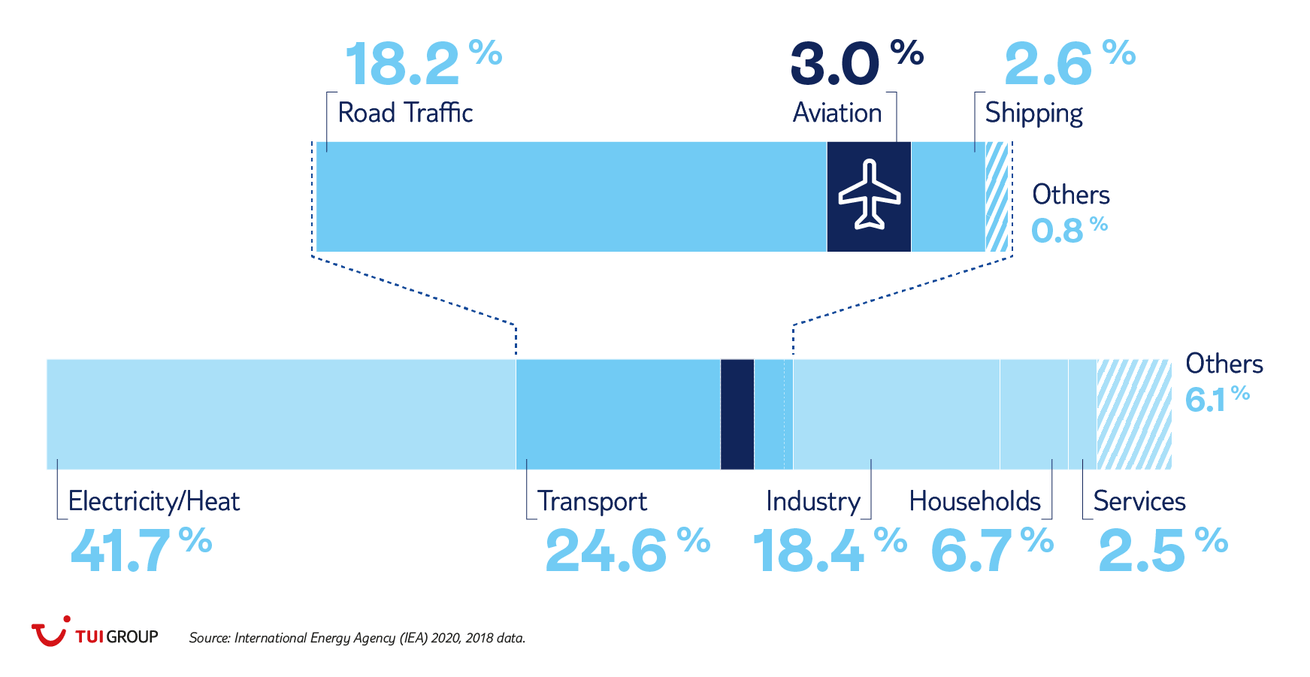Air transport accounts for around three percent of global CO2 emissions. Despite a significant increase in passenger numbers, the share has been stagnating for years, thanks to significant efficiency gains and technological leaps.
AIR TRANSPORT OF THE FUTURE: SUSTAINABLE AND AFFORDABLE FOR FAMILIES
When you travel, you leave a carbon footprint. This is also true for air travel, which accounts for about three percent of global CO2 emissions. This gives rise to responsibility. Our approach: to minimise specific CO2 emissions today through new and lower-emission aircraft. We also want to significantly increase the share of sustainably produced aviation fuels, reduce climate-relevant and environmentally harmful emissions to a minimum – and continue to make affordable holiday possible.
Politics and the aviation industry have been working together for years to reduce the climate impact of air traffic. For example, European aviation has been included in EU emissions trading alongside the energy industry and energy-intensive industries since 2012. Emissions trading ensures that the aforementioned economic sectors reduce their CO2 emissions. To this end, the amount of CO2 certificates in the EU is supposed to gradually decrease by 62 percent (previously 43 percent) by 2030 compared with 2005 levels – this is what the European Parliament decided in April 2023 in the course of the reform of the EU emissions trading system. In global air traffic, on the other hand, the CO2 compensation and reduction instrument CORSIA (Carbon Offsetting and Reduction Scheme for International Aviation) of the UN aviation organisation ICAO takes effect. Airlines have to pay for growth-related emissions. The funds then flow into ICAO-certified climate protection projects.




 Austria
Austria

